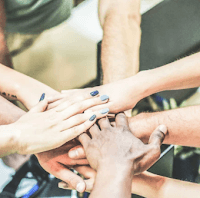2020 Safety Leadership Conference 線上研討會已於11/12圓滿落幕,本篇譯文選擇研討會中的 Keynote:How a Stronger Safety Culture Can Increase Compliance.
作為推動安全文化可提升企業永續的合規價值,以30年豐富管理經驗的Nicole Stempak安全經理的原文轉譯,給環安衛先進們在推動及管理的參考。
環安衛負責人必須重新思考讓現場端及第一線員工主動採取行動的方式
大部分企業經營者及高階主管會將環安衛單位視為需要支付費用的單位。但經過研究,環安衛管理是間接有效提升企業營收的投資,Mark Young Construction的安全經理Lance Murray表示。Murray說,負責人應學會用既有的商業報告衡量標準去展現投資在建造安全工作文化的效益。
Murray說,在11/10-12的2020年環安領導人會議中,他的演講中會包含改善環安的概念,而這概念可適用並施行在任何產業中。
在EHS Today的Q&A環節,Murray預告了他的演說內容:「文化與守規:透過強化企業安全文化提升永續合規價值」。
ESH Today:能否請您簡短敘述下您的演說並說明內容如何連結環安的領導力?
Murray:演講內容包含安全領導力的商業面,(像是)定義安全文化、打造關係與溝通以及領先v.s.落後指標與績效。堅強的安全文化及全面的領先指標可將守規性及落後指標帶到正面領域。
本次演說建立在建築業的環境條件之上,然而幾乎任何產業都可以與之連結,包括國營事業及風險管理業。但這並非技術面的演說,這些數值來自真實案例,這類案例的執行可以輕鬆套用到多數組織並可藉此和雇主或客戶激發出全新的想法和概念。
為什麼您對這報告的主題有興趣,同時,這主題對SLC與會者來說為什麼重要?
30年前我開始了我的環安衛守規專員的職涯,當時對於有責無權的狀況感到相當挫折,並認知到環安即是服從規範與政策。我不懂為什麼工作者不願配合相關規定,為什麼無論如何要求、告知他們,普遍都無法完成守規作業。環安衛專業人員需要協調關係的技巧,並建立信任及重視在這安全文化建立、成長、茁壯之際。
您希望的與會人員能有什麼收穫?
此次演講藉由整合企業端的安全領導力、建立聯繫與溝通的技巧、KPIs以及領先/落後指標,將挑戰參與者廣泛認定的「安全第一」概念。透過打造並融合安全理念到項目中的所有面向,環安不再牴觸專案項目中的各個面向且不應再被數字定義。
在您個人或專業的過去經驗中,請分享一個有關環安衛領導力或與您演講主題相關的例子。
四年前我在一家組織工作,組織為了正確的原因在做對的事。領導層深知成功的/賺錢的承包商、工地安全及對工作者的真誠關懷,三者之間的關係。但礙於工傷紀錄及案底,讓他們很難順利取得關鍵客戶訂單。
藉由發展組織中各階層的橫向關係並融合環安至專案所有層面,安全文化就是個投入組織的種子,持續成長與茁壯直至今日。四年後的現在,我們持續獲取訂單,更取得以往因為安全標準不足而丟失的數百萬美元的合約項目,去年,(我們)亦被EHS Today評為美國最安全公司之一。
您認為在2020年或未來,組織領導者和環安衛專家們面臨到最迫切的環安衛議題是什麼?
我認為太多公司內部最高層只將組織內環安衛的運行視為成本中心而非利潤中心。據此,環安衛專家需與所有領導者發展出一套聯繫與溝通的技巧,進而在公司內部推廣與建立堅強的安全文化優勢。
譯註:
本篇譯文係參照原文之涵義,將國際間已成熟多時的環安衛理念轉換成適合國內環安衛人員參考之資訊,以下為譯者統整本文三項重點:
1. 環安衛管理是一項長期的投入,評估時應將其視為投資獲利項目。
2. 由於近年來觀念的普及,環安衛管理系統的導入及運作已是眾多企業取得訂單的關鍵。
3. 環安衛管理運作的施行門檻不高,只要用對的方法及工具,幾乎所有產業都適用。
Nov 12, 2020 Nikolas.W(譯)
*本譯文僅供參考,若對內容理解有所出入,敬請參考以下英文原文,並請不吝指教。
SLC 2020: How a Stronger Safety Culture Can Increase Compliance
Safety managers must rethink their approach to get buy in from executives and frontline workers.
Nicole Stempak
OCT 30, 2020
There can be a tendency for business executives to view safety as a cost center. Instead, they should be looking at it as a profit center, says Lance Murray, construction safety manager at Mark Young Construction. Murray says safety managers should learn to use traditional business reporting metrics to show the return on investment for building a safe work culture.
Murray says his session at the 2020 Safety Leadership Conference, which takes place Nov. 10-12 virtually, includes ideas on how to improve safety that can be readily implemented in any industry.
Murray previews his session, “Culture and Compliance: How a Stronger Safety Culture Can Increase Compliance,” in a Q&A with EHS Today.
EHS Today:
Can you offer us a short description of your presentation and describe how it relates to safety leadership?
Murray:
This presentation will cover topics that include the business side of safety leadership [such as] defining safety culture, building relationships and communications, leading versus lagging indicators and KPIs. A strong safety culture, steeped in leading indicators, can pull compliance and lagging indicators into the positive territory.
This presentation is based in a construction environment. However, it is relatable in most any industry, including public entities and risk management. While this is not a technical presentation, the value is gained from real-world examples of things that can be readily implemented in most organizations and will spur new thoughts and ideas that may be initiated with your own employer or client.
Why is the topic of your presentation of interest to you and why is it important to SLC attendees?
When I first started out in my safety career as a safety compliance officer over 30 years ago, I was frustrated with the idea that I had all this responsibility and very little authority. I was disillusioned with the idea that safety was all about compliance with regulations and policy. I did not understand why workers would not be compliant with the rules and why no matter what I asked, told or demanded of them. Noncompliance was common. Safety professionals need to have relational skills and build trust and respect if a safety culture is going to succeed, grow and thrive.
What are the takeaways you hope to leave with attendees?
This presentation will challenge attendees with the widely accepted concept of “Safety First” by incorporating the business side of safety leadership, building relationships and communication skills, KPIs, and leading and lagging indicators. By building and integrating safety into all aspects of the project, safety is no longer in competition with every other aspect of the project and should never be observed on a numerical scale.
Please share an example of a personal or professional experience you’ve had related to safety leadership or the topic of your presentation.
I went to work for an organization four years ago that wanted to do the right thing for the right reasons. Leadership understood the relationship between being a successful/profitable general contractor, site safety, and genuinely cared about their employees but struggled with recordable injuries and citations that prevented them from bidding key projects.
By developing relationships at all levels of the organization and integrating safety into all aspects of the project, a culture of safety was seeded into the organization that continues to grow and thrive to this day. Four years later, we are bidding projects and being awarded contracts on multimillion-dollar projects that were lost in the past to poor safety metrics. Last year, [we were] recognized by EHS Today as one of America’s Safest Companies.
What do you think are some of the most pressing EHS and risk management issues facing corporate leaders and safety professionals in 2020 and beyond?
I think too many in the C-suite look at the safety function within an organization as a cost center instead of a profit center. In turn, safety professionals need to develop relationships and communication skills with all leadership to promote and establish the benefits of a strong safety culture within the organization.
延伸閱讀





